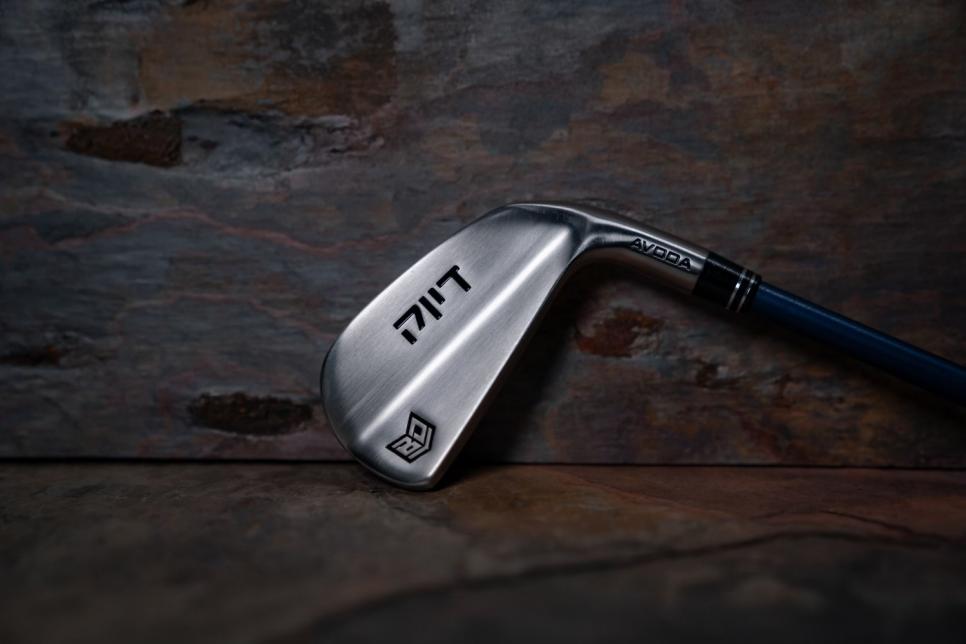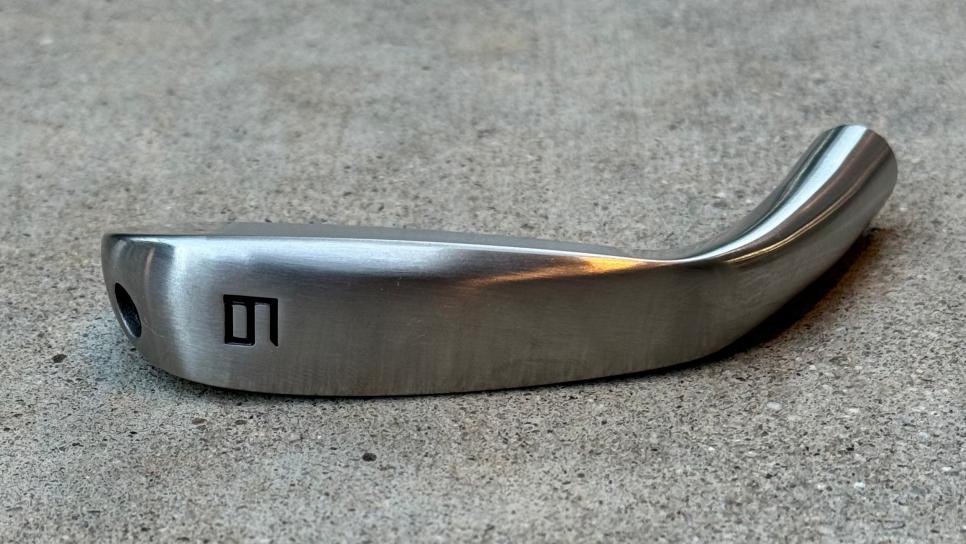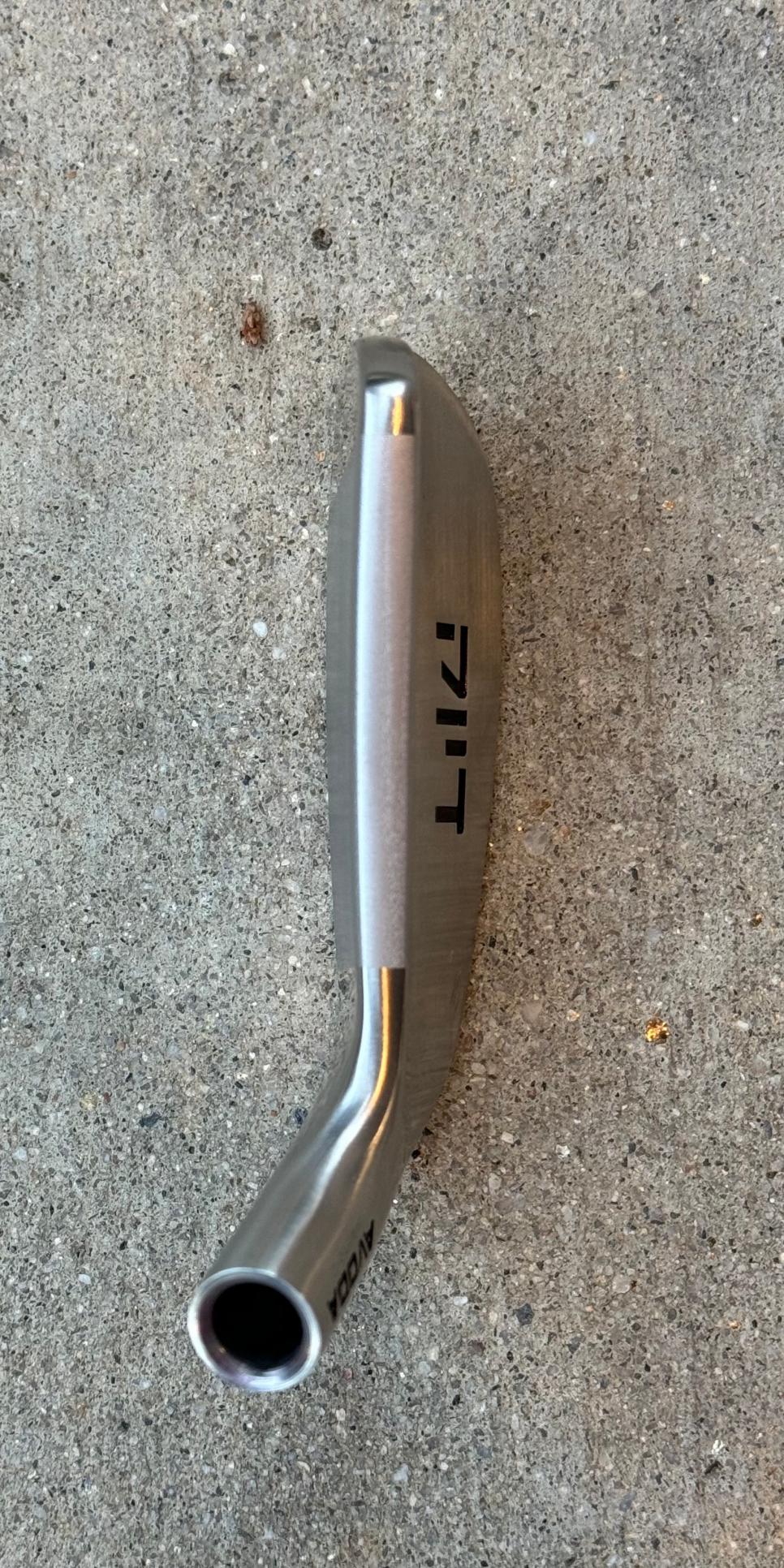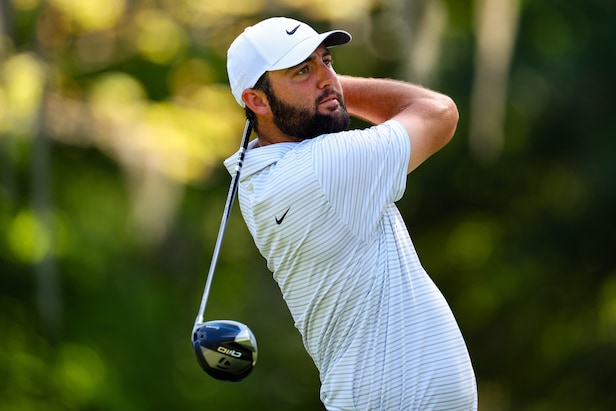The man behind Bryson’s Avoda irons: ‘It’s been an unbelievable few months’ – Australian Golf Digest

- by Admin
- June 28, 2024

Eighteen months ago, Tom Bailey was just trying to solve golf problems for himself, including teaching DP World Tour players, while also embarking on a club design journey that really was about finding clubs that might make him, and only him, play better golf. Then Bailey, the founder of Avoda Golf, hit upon the idea that the face of an iron might need to be rethought to allow mishits to fly less offline, especially for higher speed players.
Last September, he started working with Bryson DeChambeau on those irons, designing prototypes that might breed a bit more accuracy to the fast-swinging star in a way that he hadn’t been able to achieve with past models. That prototype Avoda set ended up in DeChambeau’s bag just days before the Masters and have been central to his success at this year’s majors, including his stunning U.S. Open victory at Pinehurst No. 2.
Now, Bailey finds himself in the churn of DeChambeau’s ever-widening wake, with demand to hit his curved-face irons far exceeding supply. There’s a reason for that, Bailey says. The supply exists entirely in DeChambeau’s bag. And anything beyond that is going to take time. As he says, “Bryson’s irons are Bryson-specific.”
We caught up with Bailey as he fielded call after call in the days after his Avoda irons won their first major championship.
GD: Is it fair to say that things are a little ahead of schedule with this Bryson 3D-printed project?
It’s been an unbelievable few months. But it’s funny, you know, that the big hype at the Masters was all about the 3D-printed clubs. We didn’t see that coming at all. The 3D printing was not an initial choice of ours. It was simply a necessity with the timeline we were on to try and turn the product around just to even have Bryson try them heading into the Masters. We fully believed we were still in the prototyping phase. The set he’s been playing the last few months, we literally got in the week before the Masters, and it was our third generation of a prototype with him.
GD: How did you know it could work for him?

Well, we did an initial test with a flat face, an identical head, and a curved face with an identical head, just to see if there was the kind of difference we were expecting. It was noticeable as soon as he started hitting the curved face. So Bryson said, OK, let’s do a full run of these and see what it can do. I think in the past what he wanted to see on a club never came through because he would say here’s what I want and he would end up getting something different because other people had their own ideas. We built what he asked for and obviously he went “OK.”
GD: What kinds of things was Bryson looking for?
We were kind of stabbing in the dark at what the curve values needed to be on the faces. We had a rough idea, but kind of tightened up on that and then, yeah, when the second full set came in, it was finished the week before the Masters, and we were thinking, ‘Ok, do we want to even tell him we have it this close to a major?’ Well, he hit them and said these are going in the bag and we obviously had some things to sort to get them in play. The 3D printing was just a form of rapid prototyping. Obviously, we wish we would have been able to do some CNC milling work on them to get them really ready, but that never happened and he’s been using them ever since.
GD: Just in terms of the basics of the construction, is it a single piece forging or is it hollow? And is there some type of special metal or steel in the face?

It’s a stainless steel one-piece head, hollow body, but 3D printed as one piece. It’s what we call marginally hollow because he likes a thicker topline, a wider face, a shorter hosel. To get the topline the way he wanted, to get the blade width he wanted, the only option was to make it a hollow body. But that also had the added benefit of bringing his spin rates down, which is something he’d been struggling with for years and years. He’s actually got his spin rates in the right windows, which is awesome to see.
GD: What does the curved face or bulge do, and how did you get it right?
One effect is really helping to get his spin rates down. But the amount of curvature is all relative to club speed, and obviously he’s in the higher end of that. The initial plan was to create a non-offset iron, but what we ended up creating, because of the face curvature, was a slightly onset iron which helped reduce his left miss he was struggling with. We did a rough calculation based on the bulge on his driver for the 7-iron, and when we did the initial design, we definitely went too high on the face curvature. It went too straight, which was very interesting to see. So the next run, we dropped those numbers considerably to reduce the face curvature considerably. That worked out on the lower lofts, but was still a little bit high on the rest of the set. It ended up going to the point where he would actually have a ball that would go too straight or even fall in the wrong direction.
GD: One question I have about the idea of bulge is how individual it might be, how it might need to be specific to the player. It might be one kind of curvature for Bryson, but a different or even none for my mom, right?

It’s the same issue you face with drivers available to the retail market. There’s a different bulge and roll for each model out there, based on the player type and how the head is designed. Bryson has three or four different model Krank drivers and each of them have different amounts of face curvature relative to the speed of the kind of the model you’re using. But at the retail market, you’re effectively using the same bulge driver for a 155 miles-per-hour ball speed as a guy who’s got 180 miles-per-hour ball speed. That’s exactly the problem Bryson faced when he started pushing the boundaries. It got to a point where that same one piece of equipment just wasn’t going to work.
GD: How do you see this iron going to market at some point as a consumer product?
Basically, what Bryson’s using is a prototype for Bryson, as opposed to a prototype for an iron. Bryson’s clubs are Bryson-specific. It will be cool to see people test and hit his irons, and very quickly they would find out that these clubs wouldn’t be the best option for them. But it’s obviously something people want to hit and test. Still, we’ve definitely got some exciting products in the pipeline we’re working on. So there will be an opportunity for people soon to actually be able to hit a club with some curvature on it. It’s just making sure that that’s the right one for them.
GD: Given that, are you thinking you would develop irons with a similar idea, but more geared to what you know about average golfers? You’re probably not making custom irons individually curved for each customer, right?
When I started Avoda, it was all about creating a set of golf clubs for myself. And the whole point of everything I did was just to make myself a set of clubs and maybe sell 50 to 100 sets of those across a year to fund my own golf. And when we got together with Bryson, things accelerated quickly where he eventually told us, “Hey, I need you to make me a set of irons, if you guys want to have a go at designing them. And we said, “Absolutely, let’s give it a go.” But we didn’t expect it to get to this point. It’s awesome that it has. But the original goal still remains the same. I want to build better equipment. I don’t want to just release something for the sake of releasing it; I want to build a product that’s actually going to help people. And if it’s not a product that would help me play better golf, then why would I make other people play that product?
Obviously, there’s a big demand for people to test and hit specifically what he’s got. We want to make sure that if we release something, it’s a product that will help every golfer that tries it. Not just a select few. We’re not going to make you a set of Bryson irons because you can’t hit them. That said, I think if you had the majority of the other guys on tour hit Bryson’s clubs, they would see a difference. We are in the process of getting out to fitting centers. So our priorities right now lie in making sure that the equipment is accessible and someone can be properly fit for it. The only thing that would be ready to go right this second, is if we wanted to have people play exactly the club Bryson’s playing, which is not what we believe in. We believe in having a product that matches the person who’s playing it. We’re not looking to like disrupt the industry and become a top-five major O.E.M. Rather, it’s trying to remain true to what the project was in the first place.
GD: Still, this has rapidly accelerated not only your business potential but the interest in your idea of irons with bulge. Are you worried about some of the bigger companies copying your ideas?
Yeah, you see the dollar signs floating around, you see this huge demand and the platform that Bryson has provided us within a year of starting a business. So to see within the first year, a U.S. Open win was pretty incredible. But the goal remains the same. And we don’t want to go out of our depth. Our goal is not to be that level of business. Still, just to have the platform we have right now and the exposure, it’s accelerated our opportunities by 10 years. But everything I’ve learned I’ve done so as to try and help myself become a better golfer and a better coach. Like you say, the biggest form of flattery is someone else having a go at it as well. So if that happens, well, I just want the industry to be a better place. If someone wants to go ahead and do it and, and deliver a product to help people, I may end up using it myself.
This article was originally published on golfdigest.com
The Latest News
-
December 29, 2024‘Can’t be picked. Surely’: Aussie all-rounder dilemma hits fever pitch but ex-coach backs Marsh
-
December 29, 2024Australian cricket legend Rodney Hogg reveals his hatred of the MCG – and why he sells fake signed baggy greens
-
December 29, 2024Bumrah torments Aussies again to put India on top
-
December 29, 2024Aussie Test crowd record in sight for Boxing Day epic
-
December 29, 2024Australian reserve batter Josh Inglis ruled out of Border-Gavaskar Trophy with injury





